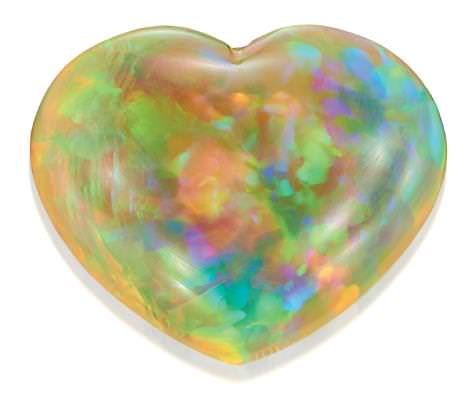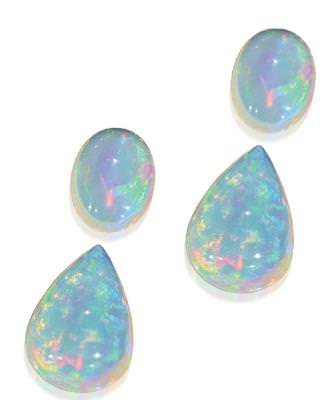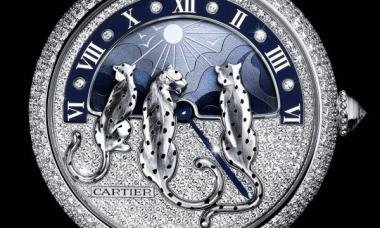Interview conducted by Monica Oproiu
Thought to originate from lightning, adored in ancient Rome as a mysterious stone encompassing the colours of all other gems, and later credited with bringing both luck and bad luck, the opal has always sparked controversies. Its uncanny play-of-colour makes the opal an attractive gem, but durability issues and potential for crazing diminishes its appeal. Traditionally, Australian opals enjoyed a pre-eminence on the market which was never seriously threatened by alternative sources of supply. The discovery in early 2008 of a new source of play-of-colour opal in the Wollo province, Northern Ethiopia, raised some eyebrows as previous opals sourced from another province in the country became known for destabilizing in time. Confronted with the controversial reputation of its predecessor, the new variety of opal was reluctantly appraised by gemmologists, gemstone companies and jewellers. Unlike previous Ethiopian opals, this is mostly white and with an often very vivid play-of-colour. Given a chance, the Ethiopian opal coming from the new source proved to be in a league of its own and started showing its true colours. CIJ Trends and Colours spoke with Paul Wild CEO Mr. Markus Paul Wild to find out more about the ingredients of this emerging success story.
-

- Opal Heart 16,33 ct
CIJTC: How did your story with opals start?
MPW: It was the beauty of the stones that made us decide to deal with opals. We actually started with Australian opals, but then we stopped dealing with them. Eventually we switched to Ethiopian opals.
CIJTC: Why did you decide to focus on the Ethiopian opal?
MPW: When we stopped dealing with Australian opals, this production of Ethiopian opals came and it was so nice, so affordable and of such good quality - higher than that of the Australian opal - that we decided to deal with opals again. So we bought huge amounts of stones and kept them for three years in my safe. During these three years we tested them in many ways, as we cannot take any risks with our customers. The Ethiopian opal proved to be more resistant than the Australian one. Opals coming from certain Australian mines cracked and we would not know in advance where they came from. But we know exactly where our Ethiopian opals are sourced from. There is one main belt, so 85% of the material is of the same quality and has the same characteristics, even though it comes from different mines.
CIJTC: What determines the value of an opal?
MPW: It is the bodycolour and the play-of-colour inside it. The bodycolour is yellowish white or orange-white. People think it is white, but actually it is a yellowish shiny colour. Their variety of colours and characteristics make opals difficult to match for sets or arrangements. Having access to a great amount of stones is therefore essential for being able to provide enough material for opal sets.
-

- Opal Ear Set 49,69 ct
CIJTC: Are there differences in the way an Ethiopian opal is cut compared to other types of opals?
MPW: We cut them in the same way. There are rumours in the industry that people have special ways to cut the Ethiopian opals. But we have no problems in cutting this material the same way as we did with the Australian opal.
CIJTC: How is the Australian opal market tackling the competition?
MPW: There is enough material on the opal market to make it grow, which is beneficial for both markets. It is competition on the one hand, but it also helps because it feeds a growing demand for opals in general.
CIJTC: So what are the ingredients of the Ethiopian opal success story?
MPW: In the end, I think it is just the beauty of the gem, combined with its affordability. Right now, the Ethiopian opal is sold for 10% of the price of the Australian one, but the price will go up for sure because the Ethiopian one is as beautiful and as good as the Australian opal. We had this type of story with many kinds of stones before. For example, there was the Burmese ruby and the Thai ruby. In the beginning they had the same quality, colour and appearance. But the price difference was huge. After a certain time in the market, people get used to them. The same thing happened with Paraiba tourmalines and now with opals.










